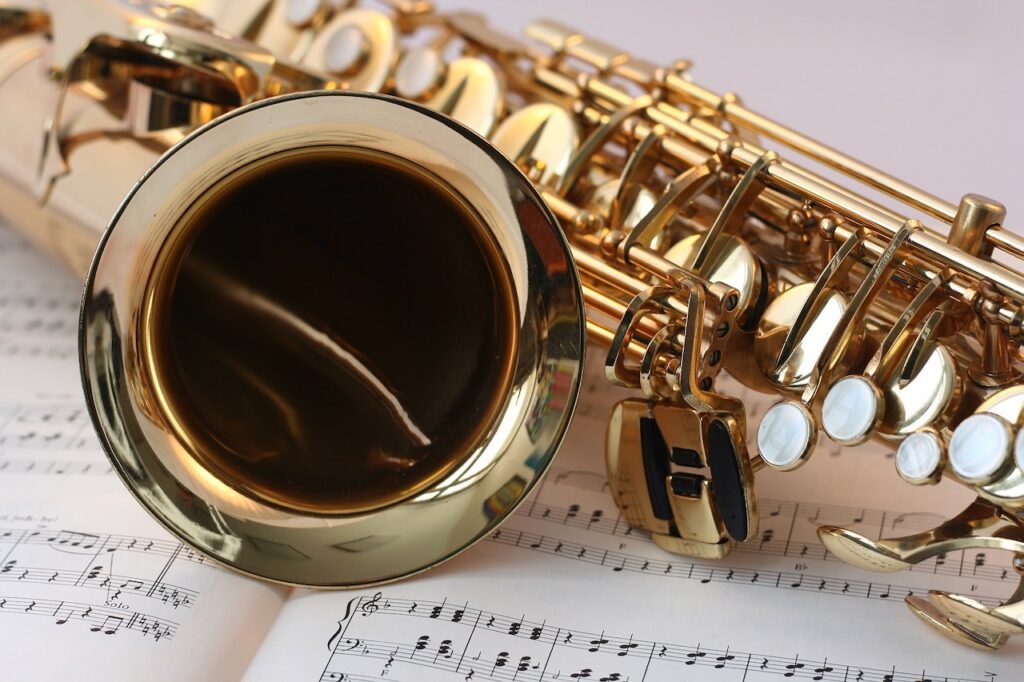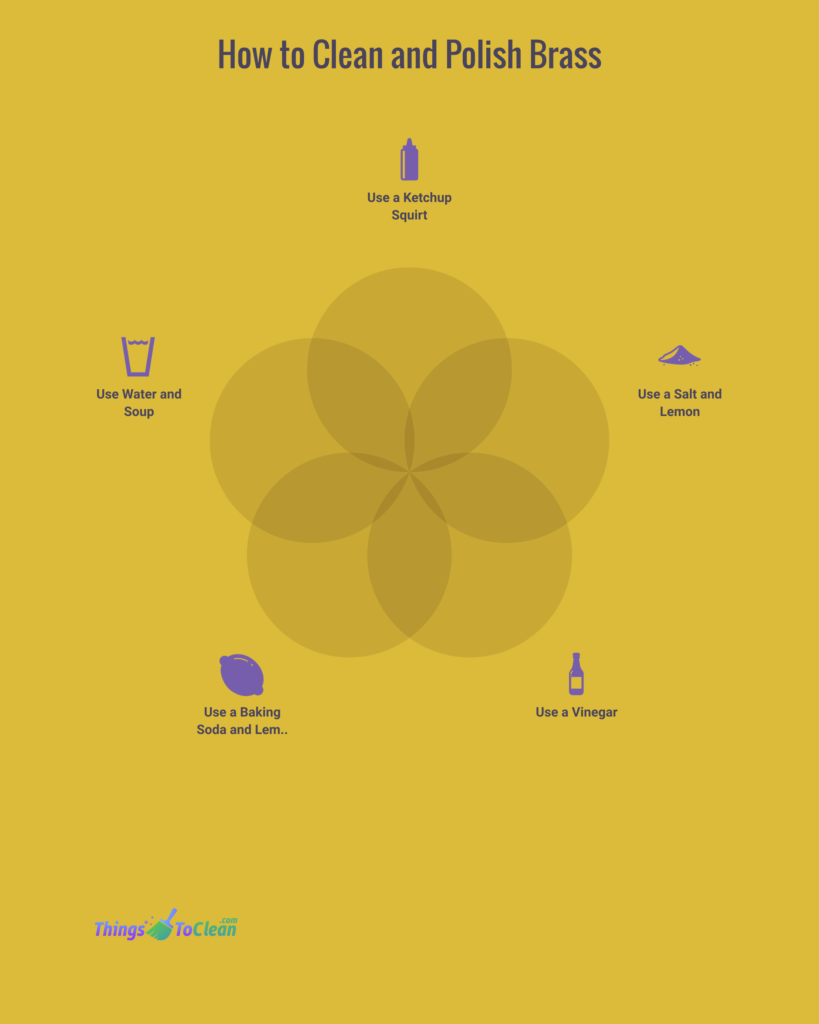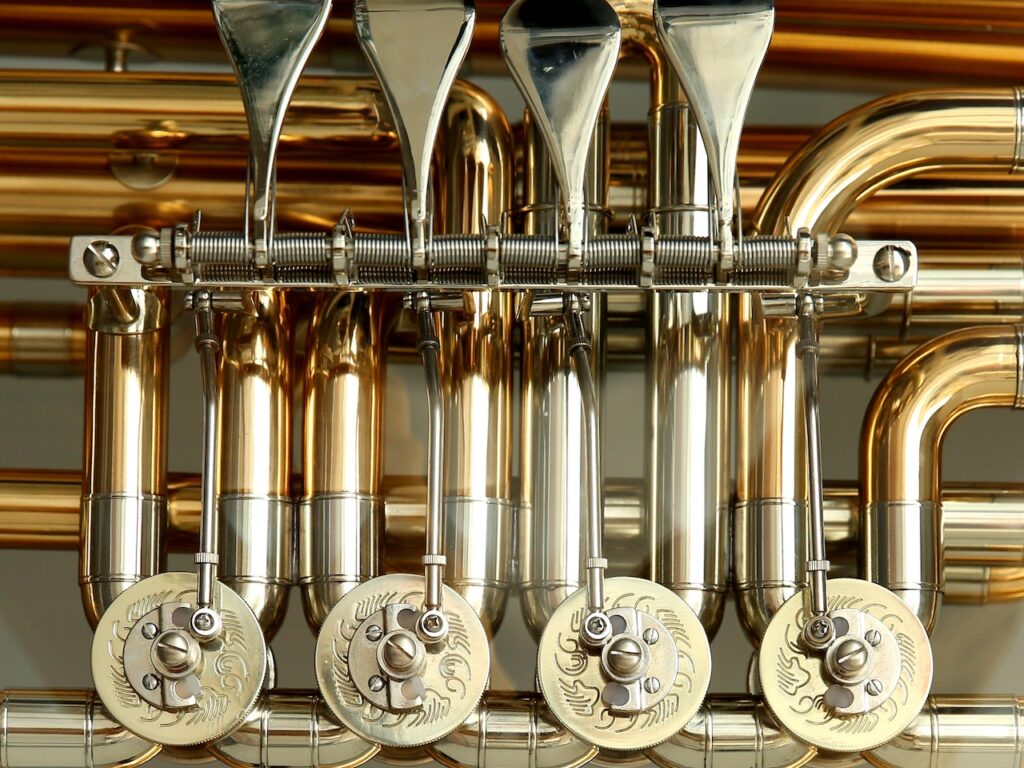Do you want to know the ways to clean and polish brass? Well, this article is right for you. Popular home goods made of brass include doorknobs, candlesticks, musical equipment, and ornamental accessories. Brass tends to tarnish & lose its shine over time, diminishing its appeal and price. Thankfully, polishing and cleaning brass is simple at home with some basic equipment and methods.
You’ll need basic cleaning and polishing tools, like a soft cloth, brass cleanser or polish, and perhaps some vinegar and lemon juice. To polish the brass to bring back its brightness and brilliance, any dirt, filth, or tarnish must first be removed from its surface.
Brass may be easily and quickly scratched or damaged. Therefore it’s crucial to be cautious when cleaning it. Yet, if you have a little time and effort, you may restore the elegance of your brass goods and enjoy them for many years. You may select the technique that works better for you by reading the following parts for more thorough guidance on how to clean & polish brass using various techniques.
What is a Brass
Brass is a copper and zinc alloy that varies in composition. Depending on the intended purpose and the required characteristics, such as hardness, color, & corrosion resistance, the precise composition of brass can change. Brass is ductility, malleability, & acoustic qualities, which make it practical in various applications, such as musical instruments, plumbing fittings, hardware, ornamental objects, and more.
Depending on how much copper and zinc are in the alloy, the coloration of brass may range from red-brown to yellow. Brass is a common material in electrical & maritime applications since it is also an excellent conductor and corrosion-resistant.
Common Uses of Brass

Copper and zinc make up most of the versatile alloy known as brass. Inconel possesses a special blend of qualities that make it suitable for a variety of applications, including strength, longevity, and corrosion resistance. Here are a few typical applications for brass:
➽Musical Instruments
Because of its superior acoustics, brass is constructing instruments like trumpets, trombones, and tubas.
➽Pipes and Plumbing Fixtures
Due to its resistance to corrosion and capacity to endure extreme temperatures & pressure, brass is in plumbing & pipe fittings.
➽Decorative Accessories
Due to its lovely golden hue and malleability, brass is commonly employed in ornamental objects like lamps, candelabra, and door knobs.
➽Jewelry
Since it is inexpensive, strong, and simple to shape, brass is frequently used as a foundation metal for jewelry.
➽Precision Instruments
In recognition of its stability & resistance to deformation, brass is utilized in precise devices like clocks and watches.
➽Ammunition Cases
Because of its toughness and capacity to bear high pressures, brass is frequently utilized to create bullet casings.
➽Electrical Components
Because of its superior electrical conductivity, brass produces electrical components, including connections, switches, and terminals.
➽Marine Applications
Brass is utilized in maritime applications, including ship construction and boat fittings, due to its resistance to corrosion in saltwater settings.
How to Clean and Polish Brass

Brass cleaning and polishing is a reasonably easy operation using supplies found around the house. Here are the following steps:
?Use a Ketchup Squirt
Ketchup must squirt on the brass, then let sit for a bit. Use a soft, moist cloth or a gentle toothbrush to wipe the brass item and brass jewelry clean after about a half hour, ideally, a full hour, has elapsed. After removing the accumulation, rinse the brass, use a clean towel to remove the ketchup, then dry it.
?Use a Salt and Lemon
Cut the flesh from a lemon in half, then sprinkle salt inside. Use this lemon to rub the brass part, adding salt as necessary. Use a gentle cloth to the brass to clean & dry it.
?Use a Vinegar
Prepare a paste using vinegar, wheat, & salt, making sure the salt is thoroughly dissolved for the worst stains and deposits. After liberally applying the mixture toward the brass item, let it set for between ten and twenty minutes. Use a moist, clean towel to wipe and rinse.
?Use a Baking Soda and Lemon
When these two cleaning chemicals are combined, a cleaner is produced that is strong enough to remove brass buildup effortlessly. Apply brass using a clean cloth after making a paste with lemon juice & baking soda. Remove the dirt with polishing and buffing, then use a moist cloth to remove any leftovers. Use a secondary clean cloth to dry your brass object.
?Use Water and Soup
To clean the brass item or brass jewelry, you only need to prepare a solution of water and soap. Use a clean cloth and a toothbrush with a soft bristle to remove the buildup and stains after soaking the brass in this combination of soapy water. Rinse, then use a fresh cloth to dry.
Additional Tips on Cleaning and Polishing Brass
If you’d rather be using commercial brass cleaners, make sure you pick one made just for brass. Before polishing, always clean the object with water and mild soap to get rid of any dust or other dirt. Next, gently clean & polish the brass item in accordance with the manufacturer’s directions.
The protective layer that brass polishes normally leave behind aids in preventing corrosion and discoloration there in the future. Avoid touching the brass too frequently (your skin oils can hasten to tarnish), and utilize a clean cloth while cleaning and polishing to prevent scratching on the surface if you want to keep it appearing clean and bright. Your brass will keep its lovely sheen for many years with routine maintenance.
Difference Between Brass Cleaning and Polishing

While some people might mistakenly believe that polishing & cleaning go hand in hand, Bougere argues that one demands a little more time and effort. According to Bougere, they were cleaning to get particles from the product. On the other side, polishing provides an item with shiny & requires the use of cleaning agents as well as cloth buffing.
Check each item of brass you own to see if it needs a good cleaning or if a good polish would do. At first glance, those antique candlesticks require a lot of work, but frequently, a piece with a lovely patina will be worth more. Last but not least, if you chance to detect a thin, shining coating, your brass object is probably lacquered and may need to be sent to a metals refinisher to have the necessary reconditioning.
The Importance of Cleaning and Polishing the Brass
Brass has to be cleaned and polished frequently to retain its aesthetic value, structural integrity, and sanitary nature. This may tarnish and dull throughout time due to contact with air, moisture, and other environmental factors. Brass may have its sheen restored by routinely cleaning & polishing the metal, improving its allure and attractiveness. In addition, corrosion & tarnish can advance, possibly resulting in irreparable harm to the brass.
Brass may be against this harm by cleaning and polishing it, maintaining the metal’s integrity throughout the years. Lastly, commonly handled metal items like doorknobs can contain bacteria and pathogens. These surfaces make safer to touch and use by cleaning and polishing them in order to assist in getting rid of dangerous bacteria. Overall, brass cleaning & polishing is crucial to preserving the metal’s look, structural integrity, and hygienic standards.
Effects of Failing Cleaning and Polishing the Brass
Brass will tarnish & lose its brilliance if it is not frequently cleaned and polished. When brass is exposed to air, moisture, as well as other contaminants like dust and grime, tarnish develops naturally. If the brass with bare hands, tarnishing may also result since the oils in your skin speed up the tarnishing process.
If the tarnish is not removed, it may develop a verdigris-like patina that is greenish-blue. Although some might regard this patina as appealing, it can harm the brass and eventually cause it to rust.
To avoid tarnish and maintain their finest appearance, it is crucial to clean & polish the brass goods routinely. You may buy brass cleanser and polish or create your own at home using ingredients like flour, salt, and vinegar. Follow the directions precisely, and stay away from anything abrasive that could damage the brass surfaces.
Frequently Asked Questions
Can toothpaste be used to clean brass?
You might be surprised to learn that toothpaste can effectively clean brass. It would be best to dab a little toothpaste on your brass using reusable paper towels or a clean cloth. After letting the toothpaste stay for a while, immediately wash it off using cold water.
How can green oxidation from brass be removed?
The best part is that while it can appear as though you’ll never be able to restore your brass object’s brilliant hue once it goes green, it actually isn’t true. Employ a combination of salt and vinegar consisting of 1 cup of white vinegar & 1 tablespoon of salt. You may massage the resulting paste on your brass to get rid of the green coloration. Rub some olive oil on the brass to restore it to new condition once the green oxidation has been fully eliminated.
What can I use to soak brass to get the tarnish off?
Whenever it comes to bigger things like bowls, candlestick carriers, or items with a lot of craftsmanship, a soak is a better option if you don’t have the opportunity to sit & polish brass. Let your brass objects soak in a solution with one part white vinegar to two parts warm water for at least 4 hours. Use this method throughout your home by tying a bag with the solution in it, just as you would when cleaning a showerhead. Tomato sauce can clean tiny objects like candlesticks and silverware.
How can you restore the shine to the brass?
Half a lemon juice and a teaspoon of baking soda should be combined and stirred until the paste forms. Using a gentle cloth, apply the paste. Let the object rest with the paste on it for at least Thirty minutes if the tarnish is severe. Dry after rinsing with warm water.
Will vinegar destroy brass?
Remember that vinegar eliminates all types of stains and patina from your brass surface. Depending on its strength, it may go unnoticed, yet it has the ability to melt brass itself. Therefore be aware not to scrape or buff too vigorously while polishing brass with vinegar.
Can WD-40 make brass shine?
The gold & brass lamp only has to be covered with WD-40, which works wonders to clean brass, and left to soak for between fifteen and thirty minutes. Use a clean cloth to dry and polish the light by rubbing it in a circular motion. Brass & gold lamps will be cleaned, polished, and given a brand-new sheen.
Final Thoughts
The maintenance of brass’s luster and brilliance requires regular cleaning and polishing—simple home materials or professional brass polishes for straightforward procedures. Brass will benefit from routine cleaning and polishing in terms of cosmetic enhancement and lifespan extension. Keep in mind to use gentle methods and to stay away from strong chemicals or products that might harm the brass. Anybody can clean & polish brass to bring out its elegance and appeal with the correct equipment and methods. Try to read about how often change vacuum bag.

